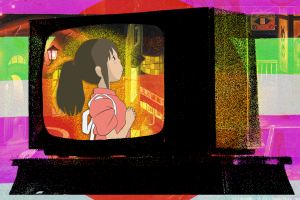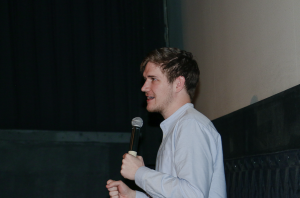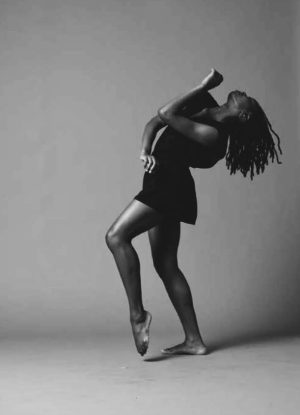The Surprising Power of ‘SpongeBob SquarePants: The Broadway Musical’
Despite being intended for kids, the show has lessons for everyone
COURTESY OF JOAN MARCUS
“SpongeBob SquarePants: The Broadway Musical” made its original Broadway debut in December of 2017 at the Palace Theatre.
September 2, 2021
I have seen a fair amount of musicals in my time, but I have never been so pleasantly surprised by a piece of theatre as I was by “SpongeBob SquarePants: The Broadway Musical.”
The value in this show can be found within multiple elements of the production, from the vibrant costumes and set assembled from eclectic junk to the faithful recreation of the beloved characters from the Nickelodeon cartoon. The mere sight of the physical prowess of Ethan Slater, who plays SpongeBob, convinces the audience the human body is capable of so many things (you, too, might one day be able to slide into middle splits).
Granted, the music leaves something to be desired: The songs are a compilation effort from a staggering array of musicians — including the Plain White T’s, Cyndi Lauper, the Flaming Lips, T.I., Panic! at the Disco and John Legend — which brings the audience on a bit of an auditory rollercoaster through musical and compositional styles.
The main conflict in the show is the discovery that a nearby volcano is about to erupt and destroy Bikini Bottom.
But what stands out to me is the distillation of complex social issues into a format that everyone can understand. Although “SpongeBob” is generally designed for children, its worth should not be overlooked merely because of its intended audience: By situating topics like xenophobia, greed and existential threat in an elementary environment like Bikini Bottom, the show can simultaneously introduce kids to difficult problems and remind adults about what really matters.
This musical’s success lies in its continuation of what has made “SpongeBob SquarePants” so popular for decades — ostensibly, it is a silly, animated television show to keep children occupied, but it makes sharp societal critiques in a way that is accessible to all ages. The musical adaptation includes similar lessons about the power of community and direct action, which have only become more timely in recent years.
The main conflict in the show is the discovery that a nearby volcano is about to erupt and destroy Bikini Bottom, sending the residents into a panic as they debate how to best address the crisis. While SpongeBob, Patrick and Sandy form a plan to stop the eruption, Mr. Krabs has begun a new ad campaign to squeeze out the last profits he can make from “one last Krabby Patty before the end!” Plankton is trying to move the population toward somewhere where he can coerce them into eating at the Chum Bucket.
Others search for a savior, looking to the nearest person they can make into their knight in shining armor. A group of sardines settle on Patrick Star as their effective cult leader after hearing him remark that “If we all close our eyes, maybe nothing will happen.” Regardless of his lack of skill or experience in leadership, Patrick now has people hanging on his every word. He revels so thoroughly in this newfound power that he abandons SpongeBob, who is now worrying about his job, his friendships and his ability to save the town on his own.
Still others cope with their distress through scapegoating. When Plankton sows distrust about science in general, and Sandy’s science in particular, reminding everyone that she isn’t “even from here” in an effort to get everyone on his side, many members of the community violently turn on her.
The musical points out Sandy’s otherness as a land mammal in a way the television show does not — the cartoon, save one episode, rarely addresses the bizarre way in which Sandy ended up as a member of the town, but the musical highlights it by putting her in opposition to sea creatures who not only reject her for being from the land but who baselessly blame her science as the reason for the chaos. Her scientific solution to the volcano is clearly the right one, but she nonetheless encounters xenophobia from a community she had previously thought was welcoming.
Rather than using the available tools to mitigate disaster, many become self-serving and resigned to their fate.
The show’s survey of how impending chaos seeps its way into everyday life and how people react in myriad ways to crisis is eminently applicable, as proven by its parallels to the pandemic response. Faced with only 24 hours to stop the world collapsing, residents of Bikini Bottom cannot shake their interest in fame, their bigoted tendencies, and their money-making schemes, all of which would seemingly be rendered mundane by such certain catastrophe.
Rather than using the available tools to mitigate disaster, many become self-serving and resigned to their fate. By providing such a clear, simple threat as a volcano exploding, the musical can explore what happens to people when the unthinkable occurs, when threats arrive so consuming that they can barely be comprehended.
The majority of Bikini Bottom succumbs to their fear and confusion, rejecting problem-solving in favor of mass hysteria in much the same way that many Americans have rejected the common-sense strategies of masking and vaccination in favor of spreading conspiracy theories and bogus medical remedies online.
The show is self-aware of its silliness — it doesn’t purport to be a serious, academic analysis of society, nor does it need to be. No one is claiming to make a grand, erudite statement. After all, it is ultimately designed for kids. But it’s still useful for everyone else. In watching a bunch of sea creatures try to stave off obliteration through Rube Goldberg machines and ukulele songs, we see ourselves, doing the best we can to juggle daily chores and personal problems while facing huge, complicated challenges such as the pandemic. It shows us that what works is finding strength in our immediate communities and working together to take action while confronting proclivities toward bigotry and distrust.














